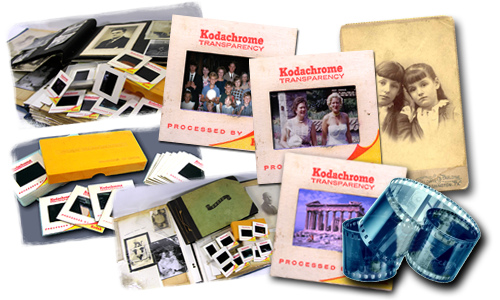High quality scanning of 35mm slides, transparencies and photos
Key Points
When 35mm film was developed the prints were returned with the positive transparencies in protective sleeves. Scanning of these transparencies will produce better results than scanning the actual prints.
Quality of 35mm slides
Generally the image quality from 35mm slides is excellent, delivering vivid colours and sharp detail. Quality scanning is a slow process and can be costly with very large slide collection.
Many people decide to purchase their own scanner and slowly digitise the slide for them selves. This can be cost effective as the scanner can be on sold to recoup most of the purchase price. This a great idea if your have the time available to feed the scanner and edit the final image.
We are here to assist if you don't have the time or energy to do it yourself and would like a slideshow created quickly to simply enjoy the memories.
35mm positive and negative slides...
Many people into photography during the 1950's to 1960's often have large collections of 35mm slides or transparencies. As with most film the 35mm slides also have a limited life, being affected by humidity, temperature, chemical contamination, light and the films age. Australia's extreme weather conditions are not good for film which is a wonderful breeding ground for mildew and fungus. Usually this remains on the film surface but if left too long will eventually eat into the emulsion layer.
Photo scanning and damage repair...
If you have albums full of old photos, these can be scanned and included in a DVD slideshow also. Damaged images such as tears or creases can be fixed digitally, restoring them to their former glory. Digital photo restoration will be priced according to the amount of work required and a quotation will be given. To preserve aging slides and photos it is recommended that they be scanned and stored in a digital format to eliminate any further deterioration.
